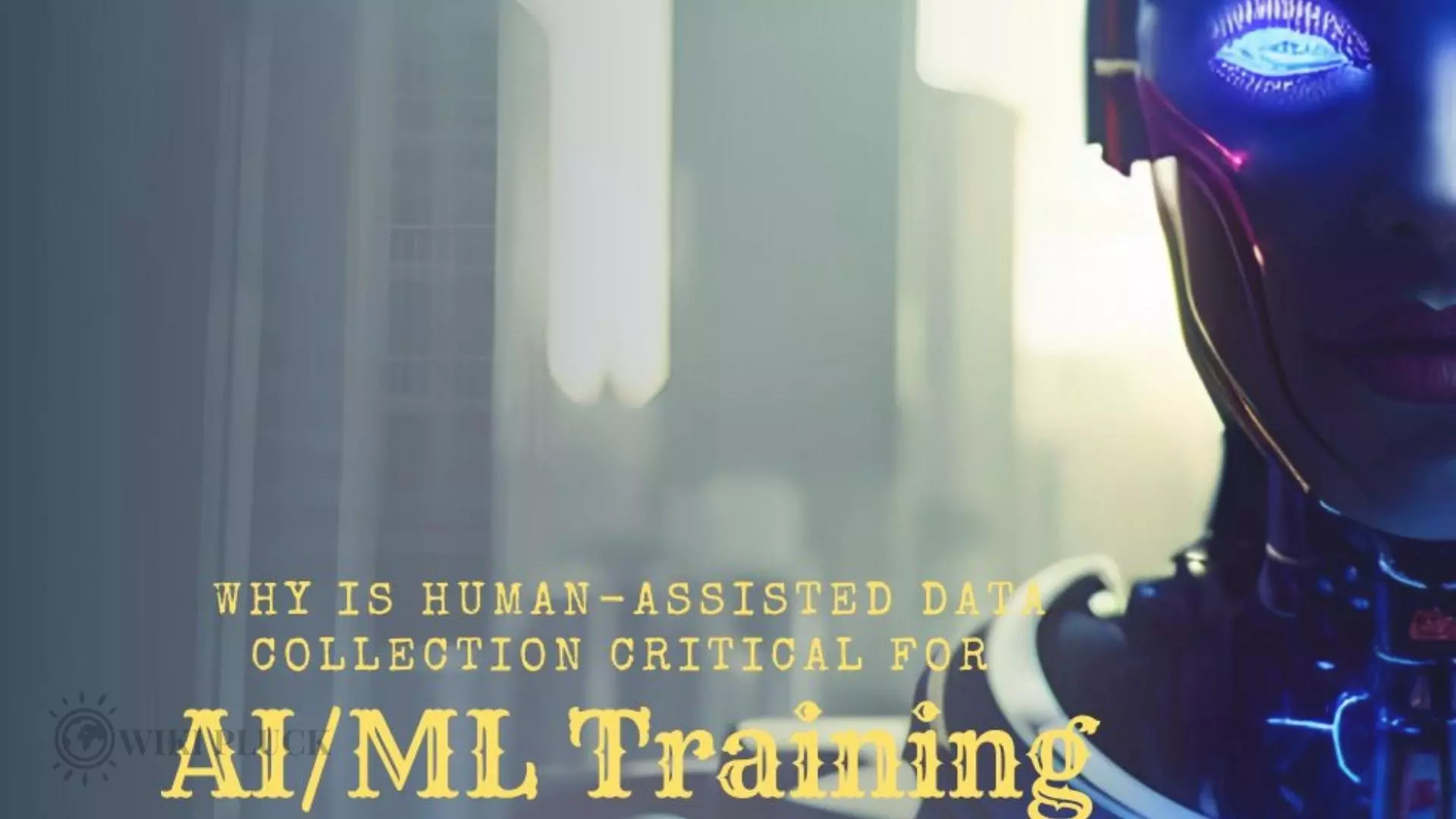Back in 2018, a Harvard Business Review study revealed that the most significant performance improvements occur when humans and machines collaborate (and this still holds true). This collaboration capitalizes on their complementary strengths: human qualities such as leadership, teamwork, and creativity, combined with AI’s speed, scalability, and quantitative capabilities.
Artificial intelligence (AI) and machine learning (ML) have emerged as transformative technologies, reshaping diverse industries globally. They empower computer vision systems to learn from data and make intelligent decisions, offering unprecedented efficiency and innovation.
However, data forms the lifeblood of AI/ML, serving as the raw material for training models. The quality and relevance of data directly impact the performance and reliability of AI applications.
But how should data be collected? While automated data-gathering methods have their place, human intervention is often indispensable for ensuring data quality, context, and ethical considerations, ultimately shaping the success of AI/ML endeavors.
The Limitations of Automated Data Collection
Known for its efficiency and scalability, automated data retrieval utilizes algorithms and software tools to quickly gather vast amounts of data. However, relying solely on automated processes comes with its share of limitations:
- Lack of context and understanding: Automated systems lack the ability to understand the broader context in which data is generated. They may collect data without fully comprehending its significance, leading to misinterpretation.
- Incomplete or biased datasets: Automated methods may inadvertently miss crucial data points or introduce bias into the dataset. This can result in skewed model outcomes and predictions that do not accurately reflect the real-world context.
- Challenges with unstructured data: Handling unstructured data, such as text or images, can be challenging for automated systems.
Also Read: What is the Difference Between Augmented Reality and Virtual Reality?
Benefits of Human-assisted Data Collection
The human-in-the-loop approach involves individuals’ active participation in various stages of data acquisition, preparation, validation, or refinement. This, in turn, enhances data quality and brings in several benefits, including:
Contextual Understanding
Humans bring contextual awareness and domain expertise, enabling them to interpret data in the real world. This contextual understanding empowers humans to verify that the datasets generated for AI model training are accurate and aligned with the intended outcomes, guaranteeing the model’s effectiveness and relevance.
Quality Control and Data Validation
Through their judgment and domain expertise, humans can selectively gather data that aligns with the intended outcomes of the AI model, thereby reducing the likelihood of errors, inconsistencies, or outliers in the dataset. This results in cleaner and more accurate training data leading to higher model performance.
Handling Edge Cases and Anomalies
Humans can recognize and manage rare or unusual cases that automated systems might miss. For instance, automated data collection might overlook rare road scenarios in training AI models for object recognition while human data collectors understand the importance of including unusual cases, like unique road hazards or uncommon animal crossings, for improved safety and effectiveness. By including these edge cases, AI models become more robust and capable of handling practical variability.
Addressing Bias and Fairness Concerns
Human intervention allows for the detection and mitigation of bias in data. Ethical considerations and objective assessments can be integrated into the data collection process, reducing the potential for biased AI outcomes.
Enriching and Structuring Data
Humans excel at structuring unstructured data, such as text or images, by categorizing, tagging, or summarizing information. This structured data becomes valuable training material for AI models, enabling them to extract insights from previously untapped sources, as it provides a foundation for the models to understand and make sense of unstructured information they encounter in the real world.
Practical Applications of Human-assisted Data Collection Across Industries
Image recognition for autonomous vehicles
Human annotators can label thousands of images with details like road signs, pedestrians, and obstacles. This data can be used in training AI algorithms to make split-second decisions while improving road safety.
Medical diagnosis
AI systems used in medical diagnosis rely on high-quality, well-labeled medical images and patient records. Human experts can curate and validate these datasets, ensuring that AI models can accurately detect diseases, leading to early diagnosis and improved patient outcomes.
Natural language processing in customer service
Human involvement in collecting, organizing, and annotating data helps train AI chatbots and virtual assistants to better understand and respond to customer inquiries. This ultimately leads to improved customer satisfaction and quicker issue resolution.
Also Read: What is Data Migration Software?
Strategies For Effective Human-assisted Data Collection
Tips for Integrating Human-in-the-loop into AI/ML Workflows
Clear guidelines: Establish well-defined guidelines and instructions for human annotators and data collectors to ensure consistency and quality.
Continuous feedback: Maintain open communication channels with the collectors, providing feedback and addressing questions promptly to improve the process iteratively.
Quality assurance: To maintain data accuracy, implement rigorous quality control & data verification and validation measures, including random sampling and double-checking.
Data privacy: Ensure compliance with data privacy regulations and protect sensitive information throughout the collection process.
The Role of Freelancing, Outsourcing, and In-house Teams
Freelancing: Consider utilizing freelancers for cost-effective tasks that don’t require domain expertise. Platforms like Upwork, Fiver, and Freelancer offer access to a wide range of freelance professionals who can assist with data collection tasks.
Outsourcing: Consider outsourcing to third-party firms with expertise in data collection and data annotation services across specific domains or industries.
In-house teams: Hire or train your organization’s data collection teams for projects requiring domain knowledge, confidentiality, or long-term commitment.
Balancing Automation and Human Involvement
Define clear tasks: Identify tasks best suited for automation, such as data pre-processing, and reserve human involvement for tasks that require subjective judgment or contextual analysis.
Automated validation: Implement automated validation checks to ensure data quality, reducing the need for extensive human intervention.
Iterative approach: Continuously assess the balance between automation and human involvement, adjusting as needed based on evolving project requirements and data quality standards.
Future Trends
Increased collaboration: We can expect automated data collection processes with AI-driven tools handling routine tasks, with humans focusing on complex data interpretation and quality control.
AI-augmented data annotation: AI algorithms will likely play a more significant role in assisting human annotators, accelerating data labeling, and improving efficiency.
Ethical considerations: Future data collection will place an even greater emphasis on ethical practices, with stricter regulations and guidelines to ensure responsible data handling.
Synthetic data integration: Emerging technologies, like synthetic data generation, will provide an alternative data source, reducing the reliance on traditional, sometimes limited, datasets.
Diverse training data: Synthetic data will contribute to more varied training datasets, potentially improving AI model robustness and performance across various scenarios.
Also Read: 7 Incredible Innovations Shaping the Virtual Reality Landscape
In a Nutshell
It is clear that human-assisted data collection is essential for ensuring data quality, context understanding, ethics, and accuracy in AI/ML projects. It enables AI models to make precise predictions, identify patterns, and provide valuable insights.
Moving forward, a balanced approach that combines automation and human expertise is crucial. Automation offers efficiency, while human involvement provides vital context and domain knowledge. This synergy leads to AI/ML systems that are accurate, ethical, unbiased, and context-aware, revolutionizing the way we interact with technology.
As the driving force behind WikiPluck, I am dedicated to curating and sharing insightful knowledge across a spectrum of subjects. From technology trends to Business advice, WikiPluck strives to be a go-to resource for those seeking to enhance their understanding and make informed decisions.
Join me on this journey of discovery and enlightenment as we pluck the gems of wisdom from the vast landscape of knowledge.

